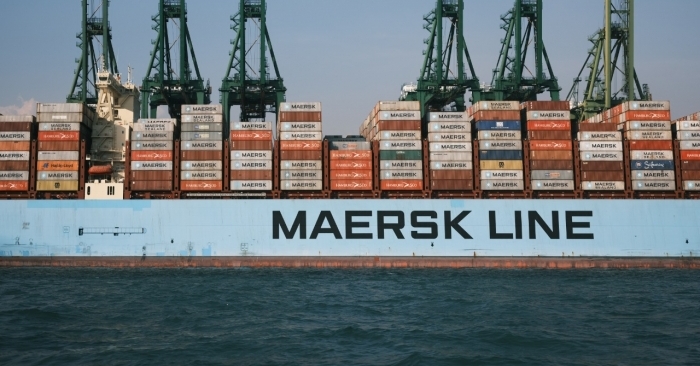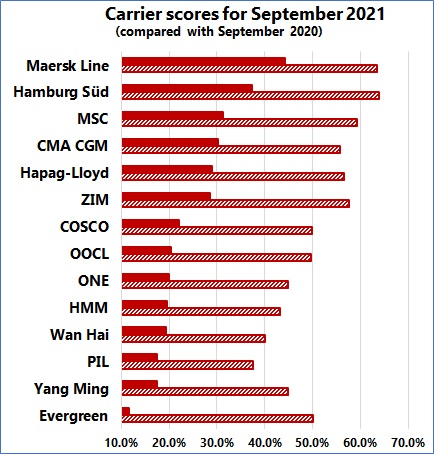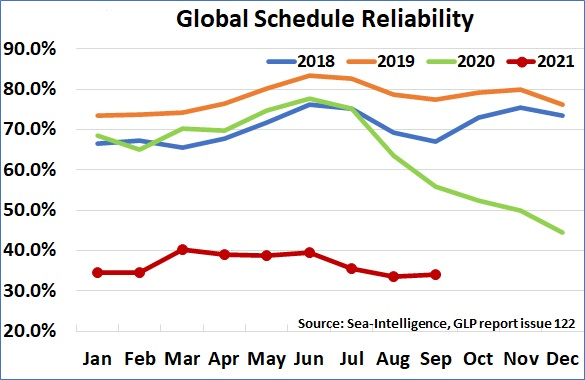Carriers' schedule reliability still poor; Maersk does well
Maersk was once again the most reliable top-14 carrier in September 2021 with a schedule reliability of 44.2 percent, followed by Hamburg Süd with 37.3 percent.

October 29, 2021: Maersk was once again the most reliable top-14 carrier in September 2021 with a schedule reliability of 44.2 percent, followed by Hamburg Süd with 37.3 percent.
While two carriers had schedule reliability between 30 percent-40 percent, four carriers recorded schedule reliability of 20-30 percent. Evergreen recorded the lowest September 2021 schedule reliability of just 11.7 percent, according to Alan Murphy, CEO, Sea-Intelligence.
"Six carriers recorded an M/M improvement in schedule reliability while no carrier recorded a Y/Y improvement in schedule reliability with all carriers, except Maersk Line, recording double-digit Y/Y declines of over 20 percentage points," Murphy added.
Schedule reliability improved marginally in September 2021 by 0.6 percentage points to 34 percent, maintaining the range of 34-40 percent seen throughout the year.
"The only positive, if one should call it that, is that schedule reliability is not plummeting further. On a Y/Y level, schedule reliability in September 2021 was down 22 percentage points. The average delay for late vessel arrivals also improved marginally, dropping to 7.27 days - still the highest figure for this month and which has been a theme throughout 2021."
Lars Jensen, a leading expert on the container shipping industry, said "the data thus also confirms that the removal of vessel capacity from the supply chains due to vessels waiting continues to be an extremely important problem and that September saw no alleviation of this."
Goods shipped between China and the U.S. via container ship took just over 40 days before the coronavirus pandemic, hold-ups and delays have extended that time to upwards of 70 days in July, August and September of 2021, according to this infographic by Katharina Buchholz of Statista.
While the Asia-US West Coast rate was 320 percent higher than the same time last year, the Asia-US East Coast rate was 316 percent higher than last year, according to freight booking platform Freightos. Pre-pandemic, only about 15 percent of bookings on the marketplace were for air cargo. In October, despite spiking air cargo rates, air accounted for 35 percent of all shipments, a 150 percent increase compared to June when the congestion at LA/Long Beach started to build, Freightos said in its latest update.
"Since June 2020, durable goods, ex auto demand, has averaged a staggering 24.5 percent above 2019 levels. This represents an unprecedented surge in demand," wrote supply chain professor Jason Miller on LinkedIn.
"The impact of the third stimulus in March 2021 is clear; spending surged upwards to new highs."
"The fact we have been able to satisfy this much demand for consumer durables — many of which are imported — shows the import supply chain isn't broken. If the system was truly broken, we wouldn't be able to satisfy this much demand."





